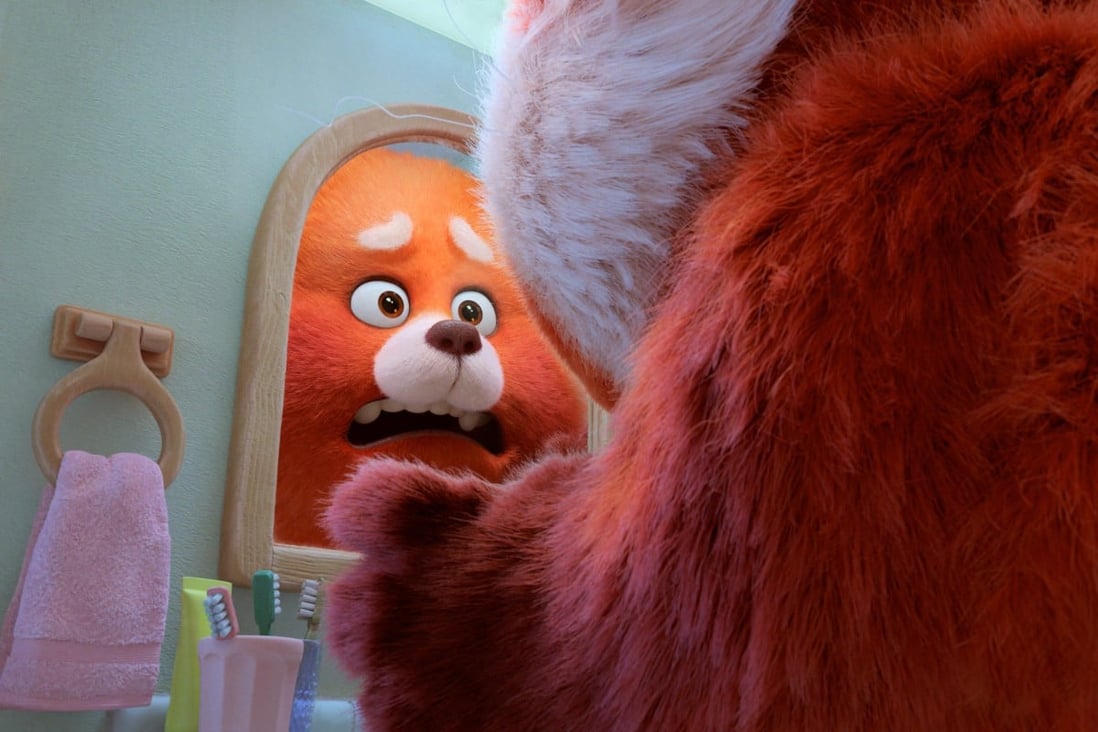How many times in the history of cinema have we watched stories revolving around women hitting puberty, experiencing menstruation, and the struggles that come with it? I am certain the answer is quite limited.
Pixar’s new animated fantasy Turning Red is groundbreaking in many ways, primarily for transcending the usual narratives of coming of age stories for young girls. The movie is also making headlines as the director Domee Shi, who earlier directed Pixar’s acclaimed-short film, ‘Bao’, is the first woman ever to direct a full-length feature film for the studio in its 36 years of establishment.
The film portrays a young 13-year-old Asian girl Me, who has 3 best friends. They fangirl together after a boy band, talk about becoming their own woman when they grow up, and support each other without fail. Mei has an overprotective, often controlling mother, whose validation at each step of the way is crucial for her.
She also discovers that sometimes she transforms into a red panda when she feels profound emotions like anger, frustration, or even extreme happiness.
Domee Shi’s creative storytelling is pivotal as it can be observed that she portrays what young girls go through when they start menstruating for the first time. Experiencing bodily changes, harbouring innocent attractions towards other genders, suddenly getting covered in body hair – all of these transformations are tackled symbolically in the story through the ‘Red, Furry, Hot-tempered Big Panda.’
Indian women, throughout their lives, have never been fully able to break the gendered expectation of ‘being a good girl’ which entails abiding by the ‘rules‘, ace at everything in school, and not mingle with boys apart from just being friends.
The pre-teenage and teenage phases where many girls start menstruating is an awfully difficult and confusing time to go through. As hormones take their natural course, our bodies change, we develop sexual awakenings, experience alienating feelings, and start questioning everything in our lives. Turning Red makes a good attempt to bring these aspects forth in the narrative
Though not set in an Indian scenario, in Turning Red as well, Mei experiences all these emotions and her mother is quick to discipline her sternly. As a result, she feels confused, hurt, misunderstood, and agitated. That is the first time she transforms into the red panda.
The only way Mei can control her transformation is by burying her feelings deep down, being neutral, and refusing to get worked up. With this subtle plotline, the film radically tries to sensitise us to how women are normally taught to control their emotions from an early age. Mei is shown doing the same – acting calm, and not showing her vulnerabilities even when she has been wronged.
Also read: Encanto: Disney’s Animated Musical Investigates Love And Agency Within Families

Turning Red’s Mei also reminded me strongly of one of my personal favorite characters to date in animation history, Brave. The headstrong, curly-haired, rebellious princess protagonist of Brave was also a bold attempt from Pixar to show complicated, messy, and intense mother-daughter relationships
In retaliation, Mei yells at her mother that she likes boys and she likes being a panda which is a part of who she is. She is 13-years old and she asserts that her mother must acknowledge her feelings. In these moments, Domee Shi brilliantly shows how often mothers in Asian communities are not able to break generational trauma and discomfort. Mei’s mother had tried to be an ideal daughter to her own mother and she expects nothing less from Mei.
The pre-teenage and teenage phases where many girls start menstruating is an awfully difficult and confusing time to go through. As hormones take their natural course, our bodies change, we develop sexual awakenings, experience alienating feelings, and start questioning everything in our lives. Turning Red makes a good attempt to bring these aspects forth in the narrative.
Addressing these biological realities which are very common in the experience of puberty and menstruation, we need to create a safe space for young girls by having honest conversations amidst a society which stigmatises these things.

Turning Red’s Mei also reminded me strongly of one of my personal favorite characters to date in animation history, Brave. The headstrong, curly-haired, rebellious princess protagonist of Brave was also a bold attempt from Pixar to show complicated, messy, and intense mother-daughter relationships.
It is time for us to shift the narratives of coming to terms with womanhood, and what these experience means for young girls and women. There must be more of such powerful, real, relatable, diverse ethnic stories in the animated world of global movies.
Also read: Muskaan: An Animated Short Film Raising Awareness On Sex Selection
Sriparna is a writer who regularly writes about travel, culture, and lifestyle in Indian publications. Her stories have been published by publications such as Outlook Traveller, Women’s Era magazine, and DNA India newspaper
Featured Image: What’s On Disney Plus




